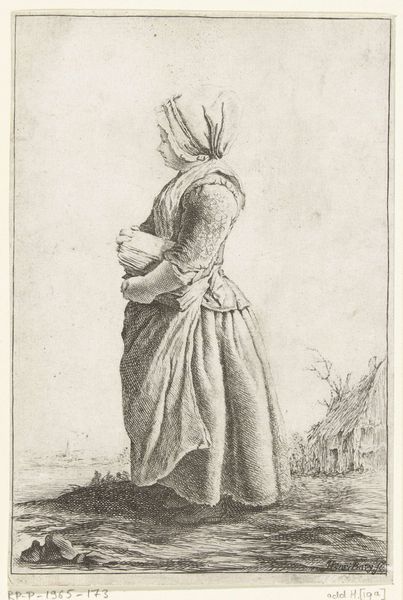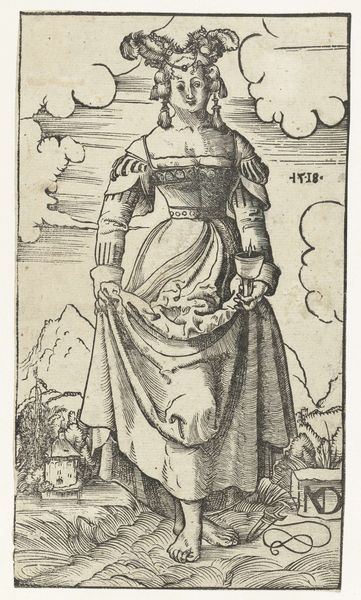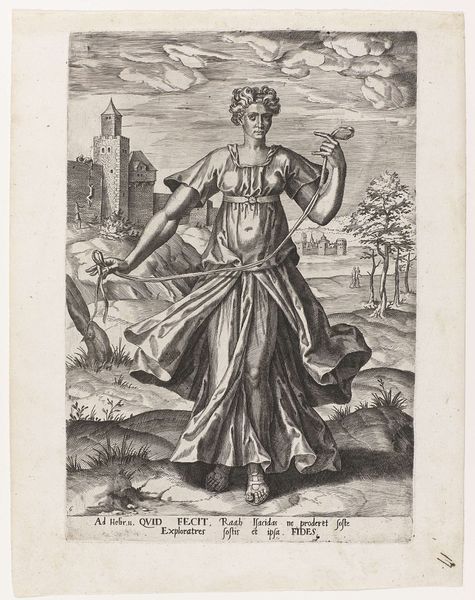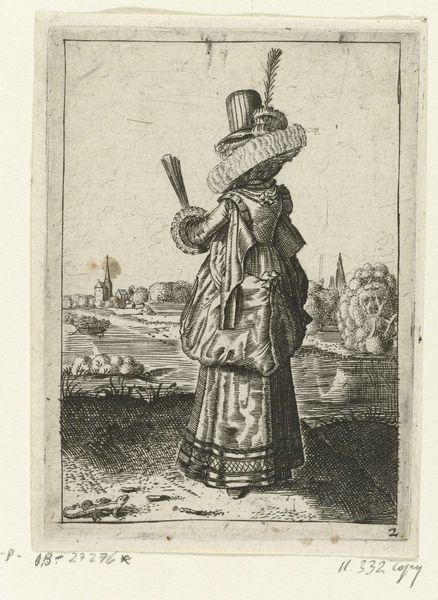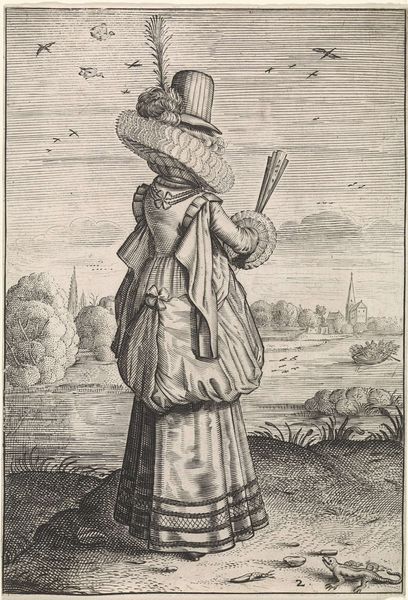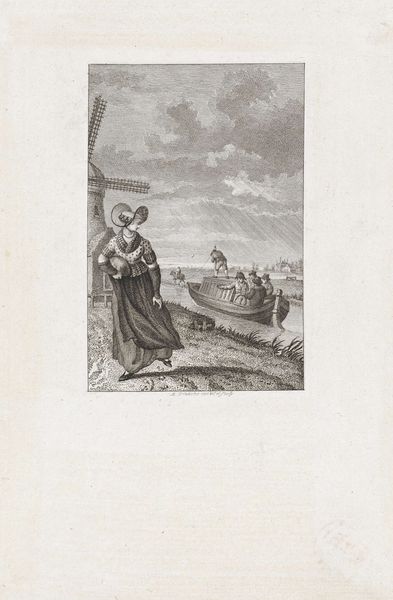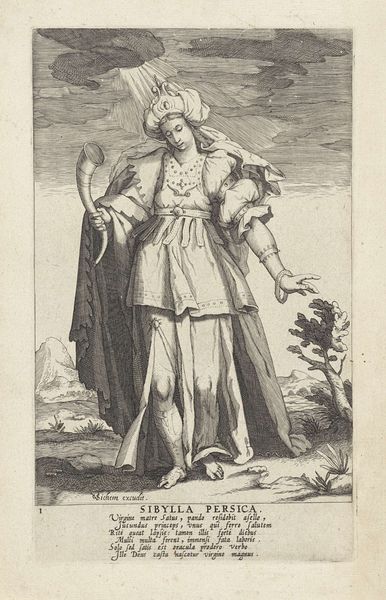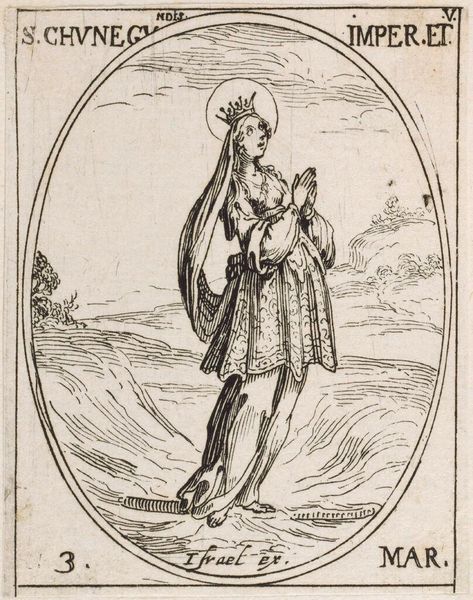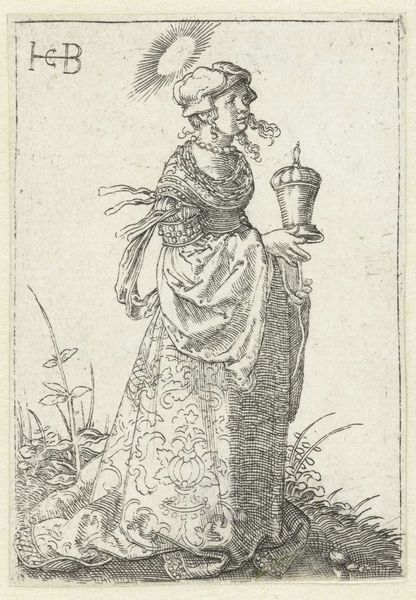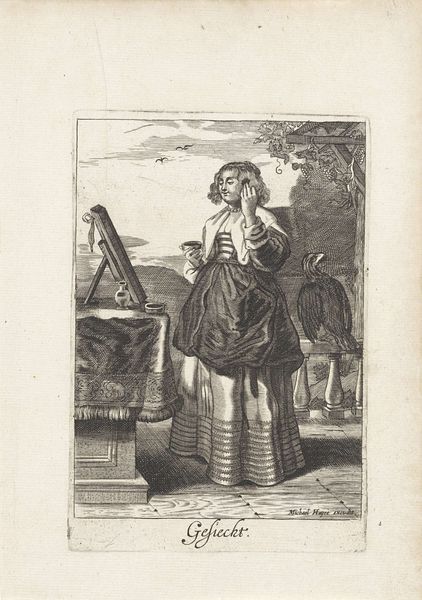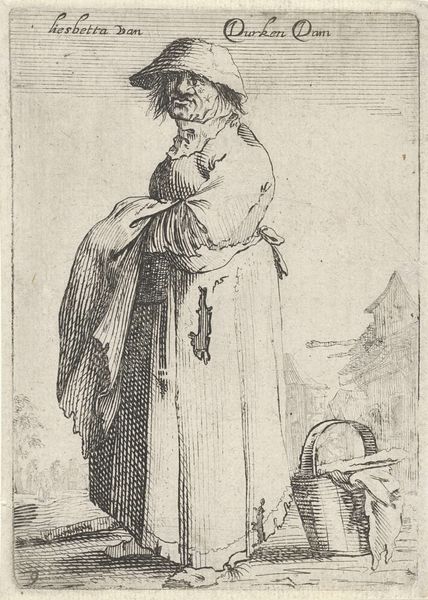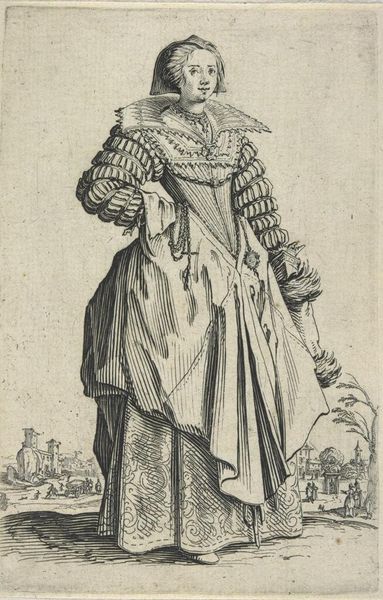
Habitus et cultus Matronarum Nobilu et Rusticarum (Clothing and Manners of Noblewomen and Countrywomen) 1619 - 1623
0:00
0:00
drawing, print, etching
#
portrait
#
drawing
#
dutch-golden-age
# print
#
etching
#
landscape
#
figuration
#
line
#
genre-painting
Dimensions: height 199 mm, width 141 mm
Copyright: Rijks Museum: Open Domain
Curator: At first glance, the composition makes me feel a bit nostalgic; there is some kind of quiet narrative unfolding within its neat lines. Editor: Indeed. What we are looking at is Adriaen Matham's "Habitus et cultus Matronarum Nobilu et Rusticarum," or "Clothing and Manners of Noblewomen and Countrywomen". It is currently held at the Rijksmuseum. Dating from around 1619 to 1623, it is a striking example of Dutch Golden Age printmaking using etching techniques. Curator: The title itself speaks volumes about its focus: clothing, manners and a focus on both nobility and rusticity. The sharp lines, part of Matham's distinctive style, make the fabric textures almost tactile and quite detailed. And is that a little kitty lounging in the lower corner? Adorable! Editor: The print offers a glimpse into the socio-cultural landscape of the time. Consider how the composition itself uses vertical lines, in order to draw attention to the figures within. The setting shows the contrast between rural labor and domestic comfort—perhaps exploring the themes of work, rest and societal rank? Curator: You can see a simple country structure on the left. The lady is almost at the entrance to that structure. And behind her, we see peasants doing hard labor. Those social dichotomies and juxtapositions fascinate me! Editor: It is interesting that Matham chooses to give equal prominence to elements like the clothing’s embellishments, plus some humble tools, with the distant haystacks. Note how Matham used hatching to build up tone and shadow, and how the perspective, while limited, does suggest depth in that background. Curator: It is more than a mere fashion plate. I am struck by her confident pose and peaceful gaze; it feels symbolic. Perhaps the artist seeks to subtly imply a form of self-assured independence of women back then? Editor: It could indeed serve as a mirror, reflecting subtle commentary about social identities and gendered roles, deeply etched, if you will, into the artwork's framework. Curator: Perhaps Matham, using etching techniques, was also metaphorically etching a deeper narrative about his world into our consciousness. What a thoughtful glimpse! Editor: A fitting conclusion to appreciating this historical composition, where sharp lines meet broader contextual landscapes!
Comments
rijksmuseum about 2 years ago
⋮
This series highlights the contrast between the clothing of Dutch noblewomen and that of women from the provinces. The regional clothing evolves slowly over time, while the fashionable attire of the elite is subject to foreign influences. For example, the woman in plate 1 wears a Spanish, conical farthingale beneath her skirt, while the woman in plate 2 wears the bellshaped version from France.
Join the conversation
Join millions of artists and users on Artera today and experience the ultimate creative platform.

